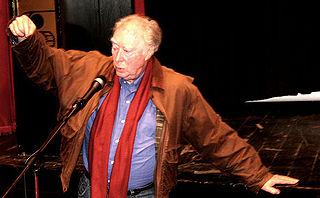
Michael James Aleck Snow was a Canadian artist who worked in a range of media including film, installation, sculpture, photography, and music. His best-known films are Wavelength (1967) and La Région Centrale (1971), with the former regarded as a milestone in avant-garde cinema.
An underground film is a film that is out of the mainstream either in its style, genre or financing.
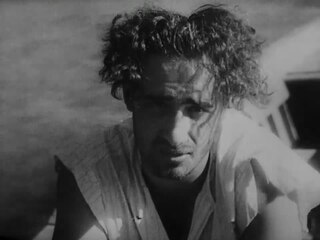
Experimental film or avant-garde cinema is a mode of filmmaking that rigorously re-evaluates cinematic conventions and explores non-narrative forms or alternatives to traditional narratives or methods of working. Many experimental films, particularly early ones, relate to arts in other disciplines: painting, dance, literature and poetry, or arise from research and development of new technical resources.
Nostalgia, styled (nostalgia), is a 1971 American experimental film by artist Hollis Frampton. It is part of his Hapax Legomena series.
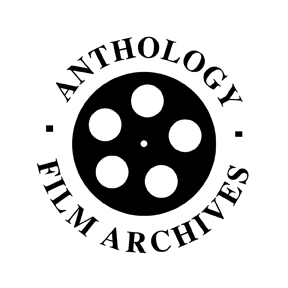
Anthology Film Archives is an international center for the preservation, study, and exhibition of film and video, with a particular focus on independent, experimental, and avant-garde cinema. The film archive and theater is located at 32 Second Avenue on the southeast corner of East 2nd Street, in a New York City historic district in the East Village neighborhood of Manhattan.
Structural film was an avant-garde experimental film movement prominent in the United States in the 1960s and which developed into the Structural/materialist films in the United Kingdom in the 1970s.
Hollis William Frampton, Jr. was an American avant-garde filmmaker, photographer, writer, theoretician, and pioneer of digital art. He was best known for his innovative and non-linear structural films that defined the movement, including Lemon (1969), Zorns Lemma (1970), and Hapax Legomena (1971–1972), as well as his anthology book, Circles of Confusion: Film, Photography, Video: Texts, 1968–1980 (1983).
P. Adams Sitney, is a historian of American avant-garde cinema. He is known as the author of Visionary Film, one of the first books on the history of experimental film in the United States.
<---> is a 1969 structural film by Canadian director Michael Snow. Shot in and outside a classroom at the Madison, New Jersey campus of Fairleigh Dickinson University, the camera pans and tilts with varying frequency.

Zorns Lemma is a 1970 American structural experimental film by Hollis Frampton. Originally starting as a series of photographs, the non-narrative film is structured around a 24-letter classical Latin alphabet. It remains, along with Michael Snow's Wavelength and Tony Conrad's The Flicker, one of the best known examples of structural filmmaking.
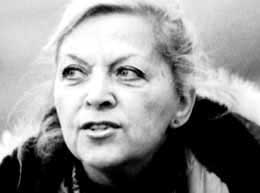
Storm de Hirsch (1912–2000) was an American poet and filmmaker. She was a key figure in the New York avant-garde film scene of the 1960s, and one of the founding members of the Film-Makers' Cooperative. Although often overlooked by historians, in recent years she has been recognized as a pioneer of underground cinema.
Hapax Legomena is a seven-part film cycle by American experimental filmmaker Hollis Frampton. The complete cycle premiered in November 1972.
The Millennium Film Workshop is a non-profit media arts center located in New York City. It is dedicated to the exhibition, study, and practice of avant-garde and experimental cinema. It was also where the St. Mark's Poetry Project began. Ken Jacobs stated in 2013 that he chose the name Millennium "...because it would have to be that to actually give out equipment, education, space to work in, etc. for free. Dictionary definition: 'A hoped for period of joy, serenity, prosperity and justice.' "
The Film-Makers' Cooperative is an artist-run, non-profit organization founded in 1961 in New York City by Jonas Mekas, Andy Warhol, Shirley Clarke, Stan Brakhage, Jack Smith, Lionel Rogosin, Gregory Markopoulos, Lloyd Michael Williams, and other filmmakers, for the distribution, education, and exhibition of avant-garde films and alternative media.
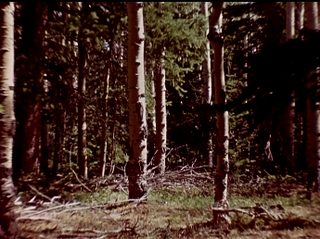
The Wold Shadow is an experimental short film by Stan Brakhage, produced in 1972.
Annette Michelson was an American art and film critic and writer. Her work contributed to the fields of cinema studies and the avant-garde in visual culture.
Anticipation of the Night is a 1958 American avant-garde film directed by Stan Brakhage. It was a breakthrough in the development of the lyrical style Brakhage used in his later films.
The Way to Shadow Garden is a 1955 American experimental film directed by Stan Brakhage.
Blue Moses is a 1962 American experimental film directed by Stan Brakhage, starring Robert Benson.

Light Industry is an American microcinema founded by Ed Halter and Thomas Beard. Since 2008 it has operated in several locations around Brooklyn, New York. Its programming focuses on obscure and unusual works.








